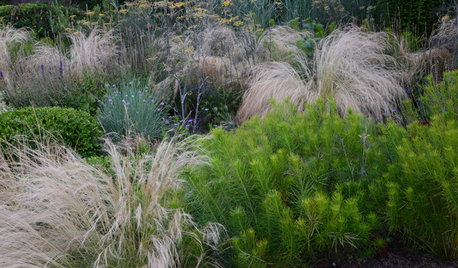Accidental Hybrid?
Holly
22 years ago
Related Stories

LIVING ROOMSThe Most Popular Living Room Photos of 2015
Sectional sofas, vaulted ceilings and custom built-ins are just some of the features that made a big showing this year
Full Story
MORE ROOMSHallways With a Beckoning Beauty All Their Own
Make a home's transitional spaces special with rhythm, function and light
Full Story
REMODELING GUIDESHome Elevators: A Rising Trend
The increasing popularity of aging in place and universal design are giving home elevators a boost, spurring innovation and lower cost
Full Story
WINTER GARDENINGPruning Secrets for Exquisite Roses
Encourage gorgeous blooms year after year with this time-tested advice on how to prune your rosebush in winter for health and shape
Full Story
MOST POPULAREasy Green: 23 Ways to Reduce Waste at Home
Pick from this plethora of earth-friendly ideas to send less to the landfill and keep more money in your pocket
Full Story
GARDENING GUIDESLet Lilac Love Flower This Spring
Whatever you bestow or receive for Mother's Day, lilacs can be an unmatched gift in the garden in May
Full Story
KITCHEN CABINETSNew This Week: 3 Modern Kitchens That Rock Warm Wood Cabinets
Looking for an alternative to bright white? Walnut cabinetry offers the perfect tone to warm things up
Full Story
ROOM OF THE DAYRoom of the Day: A Maine Guest Cottage Steeped in Charm
Once offering eggs for sale, this little guesthouse now offers a serene experience in a refined rustic setting
Full Story
GARDENING GUIDES4 Ways to Break the Rules in Your Garden
For a more creative landscape design, take a different approach to planting
Full Story
TILETop Tile Trends From the Coverings 2013 Show — the Wood Look
Get the beauty of wood while waving off potential splinters, rotting and long searches, thanks to eye-fooling ceramic and porcelain tiles
Full StorySponsored
Central Ohio's Trusted Home Remodeler Specializing in Kitchens & Baths
More Discussions






godplant
tom_wagner
Related Professionals
Beavercreek Landscape Architects & Landscape Designers · Fitchburg Landscape Architects & Landscape Designers · Norton Shores Landscape Architects & Landscape Designers · Addison Landscape Contractors · Bristol Landscape Contractors · Wareham Landscape Contractors · Lauderdale Lakes Landscape Contractors · Hawaiian Gardens Landscape Contractors · North Hills Landscape Contractors · Birmingham Carpenters · Jamaica Plain Carpenters · North Hollywood Carpenters · Pataskala Carpenters · Weston Carpenters · Monroe Fence ContractorsSparaxis
jonlyd
keking